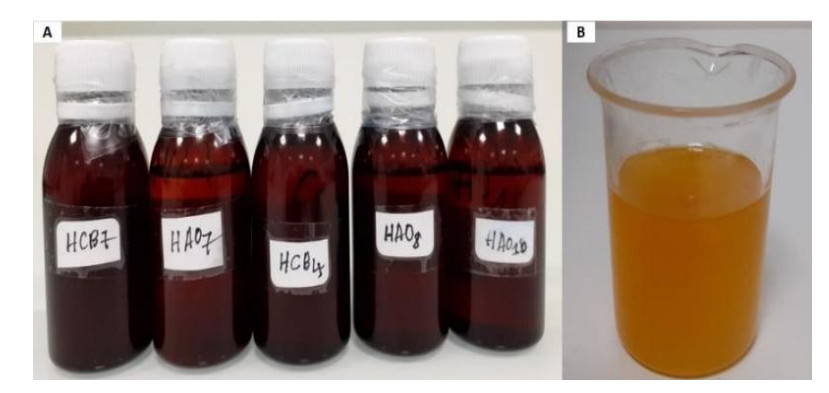1.
Introduction
This paper concerns the existence of τ-periodic brake orbits (τ>0) of the autonomous first-order Hamiltonian system
where H∈C2(R2n,R) with H(Nz)=H(z), z∈R2n, J=(0−InIn0) and N=(−In00In) with In the n×n identity matrix.
As shown in [1,2], for →x=(x1,⋯,xn) and →y=(y1,⋯,yn), we set
For z=(p1,⋯,pn,q1,⋯,qn), we have
Below are the conditions cited from [3] with minor modifications.
(H1) H∈C2(R2n,R), H(Nz)=H(z), z∈R2n.
(H2) There exist γi>0 (i=1, ⋯, n) such that
where ω(z)=n∑i=1(|pi|1+γi+|qi|1+1γi).
(H3) There exist β>1 and c1, c2, αi, βi>0 with αi+βi=1 (1≤i≤n) such that
where V(z)=V(→α,→β)(z) with →α=(α1,⋯,αn), →β=(β1,⋯,βn).
(H4) There exists λ∈[1,β2β+1) such that
where H′′zz means the Hessian matrix of H.
(H5) H(0)=0 and H(z)>0, |∇H(z)|>0 for z≠0.
Note that (H2) is a variant subquadratic growth condition which has superquadratic growth behaviors in some components and has subquadratic growth behaviors in other components, while [4] provided one other kind of variant subquadratic growth condition, we also call such conditions anisotropic growth conditions.
In the last decades, brake orbit problems have been investigated deeply, see [5,6,7,8,9,10,11,12,13] and references therein. In [14], the existence of brake orbits and symmetric brake orbits were proved under the classical superquadratic growth conditions. Meanwhile, the minimal period estimates were given by comparing the L0-index iterations. Later, in [15], the authors obtained the same minimal period estimates under a weak growth condition which has super-quadratic growth only on some J-invariant plane. In [4,16], the authors considered first-order anisotropic convex Hamiltonian systems and reduced the existence problem of brake orbits to the dual variation problem, moreover, in [4], the minmality of period for brake orbits was obtained. In [1], the authors removed the convex assumption in [16] and obtained brake orbits with minimal period estimates under more general anisotropic growth conditions which are variant superquadratic growth conditions.
The following is the main result of this paper.
Theorem 1.1. If H is a Hamiltonian function satisfying (H1)–(H5), then there exists ˜τ>0 such that when τ≥˜τ, the system (1.1) has a nontrivial brake orbit z with the L0-index estimate
Futhermore, if the above brake orbit z also satisfies
(H6) H′′zz(z(t))≥0, t∈R and ∫τ20H″qq(z(t))dt>0, where H″qq(z) means the Hessian matrix w.r.t. q for z=(p,q), p, q∈Rn.
Then the brake orbit z has minimal period τ or τ2.
We remind the readers that the minimal period τ2 may not be eliminated generally. See Remark 4.2 in [14], for example, the minimal period is τ2 under the condition (H6). In [2], we also consider the symmetric brake orbit case under the above conditions with small changes using different index iteration inequalities.
If ˜z is a brake orbit for the system (1.1), then z(t)=˜z(τ2t) satisfies
The converse is also true. So finding brake orbits for the system (1.1) is equivalent to finding 2-periodic brake orbits for the system (1.3).
In Section 2, we recall the L0-index theory and the related Sobolev space. In Section 3, we prove the existence of a nontrivial brake orbit with minimal period 2 or 1.
2.
Preliminaries
The Maslov-type index theory is higly-developed and widly-used to study the existence, minimality of period, multiplicity and stability of periodic solutions of Hamiltonian systems, see [17]. And to estimate the minimal period for brake orbits, Liu and his cooperators introduced the L0-index theory —a topologically variant Maslov-type index theory, see the monograph [18] and the recent survey paper [19].
We denote by L(R2n) the set of all 2n×2n real matrices, and denote by Ls(R2n) its subset of symmetric ones. The symplectic group Sp(2n) for n∈N and the symplectic path Pτ(2n) in Sp(2n) starting from the identity I2n on [0,τ] are denoted respectively by
As showed in [18], for the Lagrangian subspaces L0={0}×Rn and L1=Rn×{0}, there are two pairs of integers (iLk(γ,τ),νLk(γ,τ))∈Z×{0, 1, ⋯, n} (k=0,1) associated with γ∈Pτ(2n) on the interval [0,τ], called the Maslov-type index associated with Lk for k=0,1 or the Lk-index of γ in short. When τ=1, we simply write (iLk(γ),νLk(γ)).
The L0-iteration paths γj:[0,j]→Sp(2n) of γ∈P1(2n) (see [18]) are defined by
and more generally, for j∈N,
Then we denote by (iL0(γj),νL0(γj)) the L0-index of γj on the interval [0,j].
Assume B(t)∈C([0,τ],Ls(R2n)) satisfies B(t+τ)=B(t) and B(τ2+t)N=NB(τ2−t), consider the fundamental solution γB of the following linear Hamiltonian system
Then γB∈Pτ(2n). Note that γkB satisfies
The L0-index of γB is denoted by (iL0(B),νL0(B)), called the L0-index pair with respect to B.
Moreover, if z is a brake orbit of the system (1.1), set B(t)=H″(z(t)), denote by (iL0(z),νL0(z)) the L0-index of γB, called the L0-index pair with respect to z.
See [17] for the Maslov-type index (i1(γ),ν1(γ)) of γ∈P(2n). And we refer to [18] for the indices (iL0√−1(γ),νL0√−1(γ)) and (iL0√−1(B),νL0√−1(B)) for τ=1.
Below are some basic results needed in this paper.
Lemma 2.1. ([11]) For γ∈P(2n), there hold
Lemma 2.2. ([14]) Suppose B(t)∈C([0,2],Ls(R2n)) with B(t+2)=B(t) and B(1+t)N=NB(1−t). If B(t)≥0 for all t∈[0,2], then
Lemma 2.3. ([14]) Suppose B(t)∈C([0,2],Ls(R2n)) with B(t+2)=B(t) and B(1+t)N=NB(1−t). If B(t)=(S11(t)S12(t)S21(t)S22(t))≥0 and ∫10S22(t)dt>0, then iL0(B)≥0.
Lemma 2.4. ([18]) The Maslov-type index iteration inequalities are presented below.
1∘ For γ∈P(2n) and k∈2N−1, there holds
2∘ For γ∈P(2n) and k∈2N, there holds
Now we introduce the Sobolev space E=WL0 and its subspaces as in [10,14].
For m∈N, define
and set E+m:=Em∩E+, E−m:=Em∩E−. Then E=E0⊕E−⊕E+ and Em=E0⊕E−m⊕E+m. Moreover {Em,Pm} forms a Galerkin approximation scheme of the unbounded self-adjoint operator −Jddt defined on L2([0,2];L0), where Pm:E→Em denotes the orthogonal projection. Furthermore, define the following bounded self-adjoint operator A on E
and, obviously, ⟨Az,z⟩=2(‖z+‖2−‖z−‖2), Az=Az+−Az−, z∈E.
Remark 2.1. ([1]) For z∈E, there holds V(→x,→y)z∈E. And for z∈Em, we have V(→x,→y)z∈Em. As for the Fourier expression for V(→x,→y)z, see [1] for details. Note that for V defined in (H2) and z∈E, we have V(z)∈E. Moreover, a simple computation shows that
In our case, assume B(t)∈C([0,2],Ls(R2n)) satisfies B(t+2)=B(t) and B(1+t)N=NB(1−t), define the following bounded self-adjoint compact operator B
For any d>0, denote by M−d(⋅), M0d(⋅), M+d(⋅) the eigenspaces corresponding to the eigenvalues λ belonging to (−∞,−d], (−d,d), [d,+∞) respectively. Set (A−B)♯=(A−B|Im(A−B))−1. The following result is crucial to esmiate the L0-index.
Lemma 2.5. ([20,21]) For B(t)∈C([0,2],Ls(R2n)) satisfying B(t+2)=B(t), B(1+t)N=NB(1−t) and 0<d≤14‖(A−B)♯‖−1, there exists m0>0 such that for m≥m0, we have
3.
Main results
As shown in [10,14], searching for brake orbits for the system (1.3) can be transformed into finding critical points of the following functional
By (H4), we have g∈C2(E,R), then, let us now set gm=g|Em, m∈N. To find the critical points of gm, we shall prove that gm satisfies the hypotheses of the homological link Theorem 4.1.7 in [22]. The following several lemmas are essential.
Lemma 3.1. If H(z) satifies (H1), (H3) and (H4), then the above functional g satisfies (PS)∗ condition with respect to {Em}m∈N, i.e., any sequence {zm}⊂E satisfying zm∈Em, gm(zm) is bounded and ∇gm(zm)→0 as m→+∞ possesses a convergent subsequence in E.
Proof. We follow the ideas in [3].
Let {zm} be a sequence such that |g(zm)|≤c3 and ∇gm(zm)→0 as m→∞, where c3>0. To prove the lemma, it is enough to show that {zm} is bounded.
For m large enough, by Remark 2.1 and (H3), we have
then there exists c4>0 such that
For large m, we have
By (3.2), (H4), H¨older's inequality and the embedding theorem, we obtain
where β>λ≥1 for (H3), (H4) and c5, c6>0 are suitable constants.
Combining (3.1) and (3.3), for m large enough, there exists c7>0 such that
Set ˆzm=zm−z0m=z+m+z−m. By (H4), (3.4) and the embedding theorem, we obtain
where c8, c9>0 are suitable constants. From (3.4) and (3.5), we see
where c10>0. From (H3), it follows that
From (3.6) and (3.7), we see that
where c11>0. From (3.4), (3.8) and λ+λββ2<1, we see {zm} is bounded.
For u0∈E+1 with ‖u0‖=1, define S=(E−⊕E0)+u0.
Lemma 3.2. If H(z) satifies (H1), (H4) and (H5), then there exists ˜τ>0 such that for τ≥˜τ, there holds infSg>0.
Proof. The ideas come from [23].
For z∈S, we have
There exist two cases to be considered.
Case (i) If ‖z−‖>1, then by (H5), we have
Case (ii) If ‖z−‖≤1, set Ω={z∈S∣‖z−‖≤1}, then Ω is weakly compact and convex.
Since the functional z↦∫20H(z)dt is weakly continuous, then the functional achieves its minimum on Ω, assume the minimum is σ achieved at u−+u0∈S. Since u0≠0, we have u−+u0≠0, then σ>0 by (H5).
Set ˜τ=2σ, for τ>˜τ, by (3.9), we have
Therefore, the lemma holds.
Choose μ>0 large enough such that σi=μ1+γi>1 and τi=μ1+1γi>1. For ρ>0, we set
where z=(p1,⋯,pn,q1,⋯,qn)∈E. Note that Lρ is well-defined on E by Remark 2.1. The operator Lρ is linear bounded and invertible and ‖Lρ‖≤1, if ρ≤1.
For any z=z0+z−+z+∈E, we have
Lemma 3.3. If H satisfies (H2), then there exists ρ>1 large enough such that supLρ(∂Q)g<0, where Q={z∈E+∣‖z‖≤ρ}.
Proof. For any ϵ>0, by (H2), there exists Mϵ such that
For z∈∂Q, from (3.10) and (3.11), we have
where c12>0 is the embedding constant.
Choose ϵ>0 such that nτϵc12<1, then for ρ>1 large enough, we have supLρ(∂Q)g<0.
Lemma 3.4. Set Sm=S∩Em and Qm=Q∩Em. For ρ>1 defined as above, we have Lρ(∂Qm) and Sm homologically link.
Proof. Since ρ>1, ρ>‖L−1ρ‖=‖L1ρ‖. By direct computation, we can check that PLρ:E+→E+ is liner, bounded and invertible (see [24]). Let ˜Pm:Em→E+m be the orthogonal projection. Note that Lρ(Em)⊂Em by Remark 2.1, then (˜PmLρ)|Em:E+m→E+m is also linear, bounded and invertible.
Then the assertion follows from Lemma 2.8 in [3].
Theorem 3.1. Assume H satisfies (H1)–(H5), then there exists ˜τ>0 such that for τ≥˜τ, the system (1.3) possesses a nontrivial 2-periodic brake orbit z satisfying
Proof. The proof is standard, we proceed as that in [10,14].
For any m∈N, Lemmas 3.1–3.4 show that gm=g|Em satisfies the hypotheses of the homological link Theorem 4.1.7 in [22], so gm possesses a critical point zm satisfying
By Lemma 3.1, when τ≥τ0, we may suppose zm→z∈E as m→∞, then g(z)>0 and ∇g(z)=0. By (H5), we see the critical point z of g is a classical nontrivial 2-periodic brake orbit of the system (1.3).
Now we show (3.13) holds. Let B be the operator for B(t)=τ2H′′zz(z(t)) defined by (2.1), then
By (3.15), there exists r0>0 such that
where d=14‖(B−A)♯‖−1.
Hence, for m large enough, there holds
For x∈Br0∩Em and w∈M+d(Pm(B−A)Pm)∖{0}, (3.16) implies that
Then
Note that
By (3.17), (3.18) and the link theorem 4.1.7 in [22], for large m, we have
Hence, we obtain iL0(z,1)≤0.
Theorem 3.2. Assume H satisfies (H1)–(H6), then there exists ˜τ such that for τ≥˜τ, the system (1.3) possesses a nontrivial brake orbit z with minimal period 2 or 1.
Proof. The idea stems from [14], we proceed roughly.
For the nontrivial symmetric 2-periodic brake orbit z obtained in Theorem 3.1, assume its minimal period 2k for some nonnegative integer k. Denote by γz,1k and γz the corresponding symplectic path on the interval [0,1k] and [0,1] respectively, then γz=γkz,1k.
As shown in [14], we have the L1-index estimate
By (H6), we see B(t)=H″(z(t)) is semipositive, Lemmas 2.1 and 2.2 and Eq (3.19) imply that
By Lemmas 2.2 and 2.3, we see
If k is odd, by Lemma 2.4, we see
From (3.13), (3.20)–(3.22), we see k=1.
If k is even, If k is even, by Lemma 2.4, we see
From (3.13), (3.20), (3.21) and (3.23), we have k=2.
Acknowledgments
The first author is supported by the Scientific and Technological Innovation Programs of Higher Education Institutions in Shanxi (Grant No. 2021L377) and the Doctoral Scientific Research Foundation of Shanxi Datong University (Grant No. 2018-B-15). The authors sincerely thank the referees for their careful reading and valuable comments and suggestions.
Conflict of interest
The authors declare there is no conflicts of interest.















 DownLoad:
DownLoad: